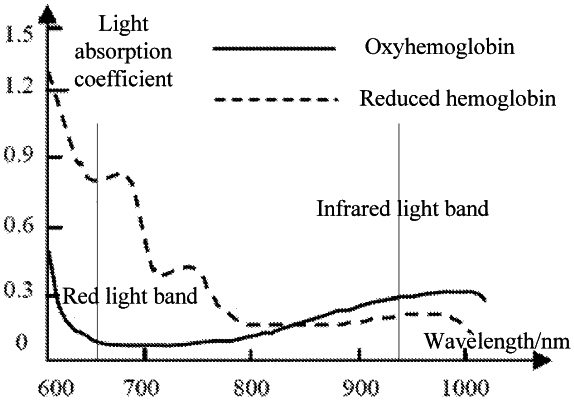| CPC A61B 5/7257 (2013.01) [A61B 5/00 (2013.01); A61B 5/02 (2013.01); A61B 5/024 (2013.01); A61B 5/1455 (2013.01); A61B 5/14551 (2013.01); A61B 5/7225 (2013.01); A61B 5/7235 (2013.01)] | 17 Claims |

|
1. A system for calculating a physiological parameter, comprising:
a sensor comprising at least one light emitting tube and at least one receiving tube, the light emitting tube emitting at least two optical signals of red light and infrared light for transmitting through a physiological tissue, and the receiving tube receiving the at least two optical signals transmitted through the physiological tissue and converting the at least two optical signals received into electrical signals;
an analog-to-digital converter connected to the sensor to convert the electrical signals into a time domain signal, the time domain signal including at least some of characteristics of the physiological tissue; and
a digital processor connected to the analog-to-digital converter, the digital processor performing the following process:
performing a time-to-frequency domain transformation on a section of the time domain signal to obtain a corresponding frequency domain signal;
selecting all rational frequency spectrum peaks from the frequency domain signal, calculating energy information of the selected rational frequency spectrum peaks, and forming a frequency spectrum peak energy ratio sequence;
constructing a stability coefficient according to the frequency spectrum peak energy ratio sequence, and if the stability coefficient is relatively low, constructing a compensation coefficient by using the frequency spectrum peak energy ratio sequence, wherein constructing the compensation coefficient comprises selecting a mean value of a statistical spectrum peak energy ratio deviation sequence and converting the same by means of a coefficient table to a denominator of a compensation coefficient calculation formula, and selecting the mean value plus a standard deviation of the statistical spectrum peak energy ratio deviation sequence or the mean value minus the standard deviation and converting same by means of the coefficient table to a numerator of the compensation coefficient calculation formula, and calculating a ratio of the numerator to the denominator to obtain the compensation coefficient; and
compensating for at least one of the time domain signal and the frequency domain signal by using the compensation coefficient, and calculating the physiological parameter based on at least one of the compensated digital signal and frequency domain signal.
|